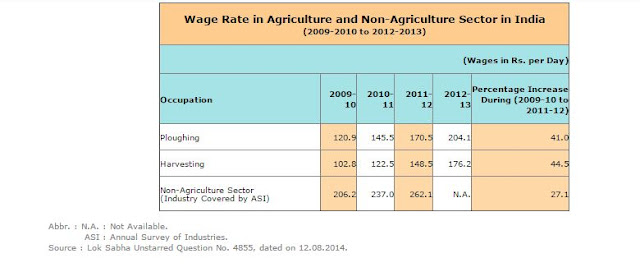India: Populous Country or Aging Society?
The recent discussion about population control sparked by the ruling party and the UP government’s bill is a bit perplexing because the government's academic stance differs. The economic survey 2018-19 (ESI 2018-19) raises concern over rapidly declining population growth as well as falling total fertility rate. It also suggests that few states will begin to transition to an aging society.
There are two
important questions (ignoring the religious argument. According to NFHS-4
(2015-16) and NFHS-5 (2019-20) (National Family Health Survey), almost all
religions are witnessing the decline in fertility rate).
1)
Is the population actually growing?
2) Population
and (vs) Development: Population or Human Capital?
1) Is the
population actually growing?
India's annual population growth rate is already decreasing (Fig. 1). For the majority of
states, population growth is less than one. It is highest in Bihar, with a
population growth rate of less than 2 (Fig. 2).
Figure 1: Annual Population Growth Rate in India (percent)
Source: Census
2011, International Institute for Population Sciences (IIPS) estimates, taking
from ESI
Figure 2: Annual Population Growth Rate by State during 2011-16 (per
cent)
Source: Census
2011, International Institute for Population Sciences estimates, taking from ESI
The Economic
Survey of India suggests that the decline in population is primarily driven by
the decrease in the total fertility rate.
Figure 3: Total Fertility Rate for India
Source: Sample
Registration System, taking from ESI
The total fertility rate is the number of children born or expected to be born to a woman
of childbearing age over her lifetime. Therefore, it has a direct link to
population growth. Fig. 3 suggests that the total fertility rate for India is
declining continuously. This total fertility rate depends on the level of
development.
Table 1: Income category wise fertility rate
|
Income
group |
mean
fertility rate |
|
Low
income |
4.58 |
|
Lower
middle income |
3.16 |
|
Upper
middle income |
2.17 |
|
High income |
1.67 |
|
Total |
2.60 |
Data source: World
Bank Open data source. The author has calculated the average fertility rate based on
data for countries in 2019. The income categories are defined by World Bank.
Table
No. 1 shows that the average fertility rate decreases as one moves from low to
high income. This supports the literature that shows that fertility rates
decline as income rises since income, education, and health are all positively
associated, and therefore as income rises, fertility rates fall due to
educational advancement. Figure no. 4 reflects this argument as for categories,
there is a trade-off between per capita GDP and fertility rate.
Figure 4: Fertility rate-per capita GDP
Data
source: World Bank Open data source. The author has calculated the average fertility
rate based on data for countries from 1960. The income categories are defined
by World Bank.
The
Economic Survey of India 2018-19 estimates the total fertility rate till 2041. All
states will have a total fertility rate smaller than the replacement rate (Fig 6).
Few states are already witnessing a lower fertility rate.
Figure 6: Estimated TFR
Source: Census 2011, International Institute for Population Sciences estimates, taking from ESI.
Combining
all figures, it can be argued that
a)
India’s population growth rate is declining.
b)
It
will continue to decline as the country's development status improves.
2) Population
and (vs) Development: Population or Human Capital?
The relationship between population and (or against) development is widely debated. Malthusians express concern about the growing population which puts the burden on food But, thanks to technological advancements, the food supply has increased fairly where the growth of the population has not put the burden on the food supply. Further “neo-Malthusians” argue that population expansion has harmed the ecological balance by causing deforestation and land degradation. but is it only due to population? Not only does the population represent consumption, but it also represents manpower. The question is whether that manpower is getting utilized properly or not. The question is whether the population is getting reflected into “human capital” or not. According to World Bank, human capital consists of the knowledge, skills, and health that people invest in and accumulate throughout their lives, enabling them to realize their potential as productive members of society (https://www.worldbank.org/en/publication/human-capital). The world bank measures human capital based on health and education indicators.
Table 2: Human Capital Index
|
Country Name |
2018 |
2020 |
|
Russian Federation |
0.73 |
0.68 |
|
China |
0.65 |
0.65 |
|
Brazil |
0.55 |
0.55 |
|
India |
0.48 |
0.49 |
|
South Africa |
0.42 |
0.43 |
Data source: World Bank.
In BRICS nations, India stands second last in the human capital index (Table no. 2). China, the most populous country has human capital index higher than India. Not population but not having human capital is a problem. Developing human capital not only helps for economic growth but also can make an ecological balance. Investing the gains from ecological degradation into human capital can stop the degradation of “overall capital or resources including human capital”. That can make the population less dependent on existing resources.





.jpeg)


टिप्पण्या
टिप्पणी पोस्ट करा